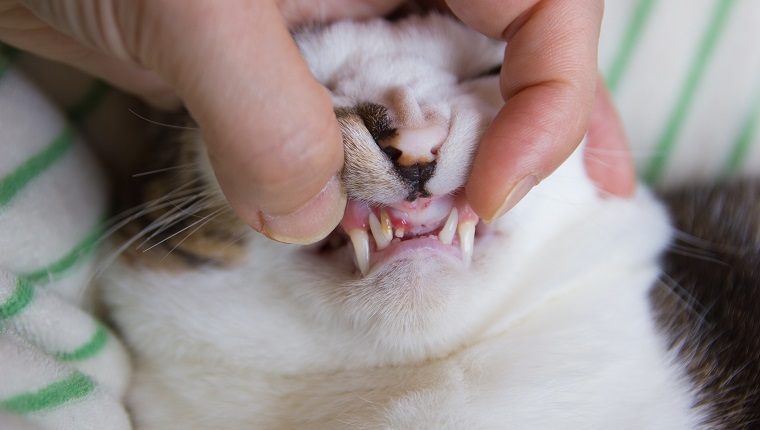Gingivitis in cats is a condition that affects a cat’s dental health and causes inflamed and red gums. It’s the first stage in the more serious condition of periodontal disease.
The condition is relatively common in cats. Studies estimate that as many as 80 percent of all pets over the age of three will suffer from it at some point.
If you see the signs of gingivitis in your cat, then you must get to a veterinarian for a proper diagnosis and treatment. Here’s what you should know about the symptoms, causes, and treatments for gingivitis in cats.
Symptoms Of Gingivitis In Cats
Gingivitis can affect many areas of a cat’s mouth.
Some of the most common symptoms include:
- Swollen gums
- Very red gums
- Bad breath
- Visible plaque on the teeth
Along with the above symptoms, a cat suffering from gingivitis might also begin to become more lethargic and more withdrawn than usual.
Causes Of Gingivitis In Cats

The main cause of gingivitis in cats is a build up of plaque and sugars on cats’ teeth. This residue, which becomes sticky, eventually begins to grow under cats’ gums and, in turn, redness and inflammation can develop.
Some of the other contributory causes of gingivitis in cats are as follows:
- Bad dental hygiene
- Crowded teeth in the mouth
- Old age
It should be noted that certain breeds of cat that posses shorter noses than usual, including Chinchillas and Persians, can become more prone to gingivitis because they’re more likely to suffer from overcrowded teeth.
Treatments For Gingivitis In Cats
If you suspect your cat has gingivitis and bring them to a veterinarian, the vet will perform an examination of your cat’s mouth and teeth. This dental exam might happen under anesthesia.
They’ll also look over the cat’s medical history and ask if you’ve noticed whether the cat has been experiencing bad breath recently.
Along with giving your cat’s teeth a thorough cleaning, your vet might suggest an X-ray to make sure the gingivitis hasn’t developed into periodontal disease.
In cases where overcrowded teeth are an issue, your vet might suggest removing select teeth.
In general, your vet will also advise you on beginning a home dental cleaning regimen for your cat. You may need to pick up a special toothbrush and toothpaste for your pet.
Switching to certain dental-friendly foods and treats is also a frequently suggested option.
Do you take care of your cat’s teeth to prevent gingivitis? What advice does your vet give you for taking care of your kitty’s oral hygiene at home? Let us know in the comments section below!
Click the bold links in the article to shop for your cat and support our content!









